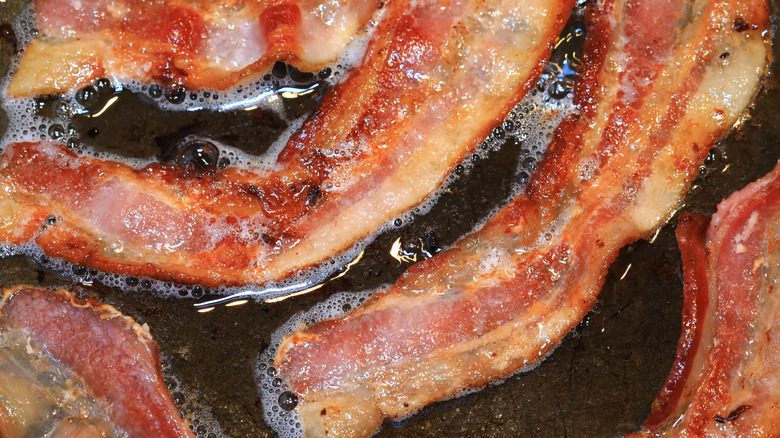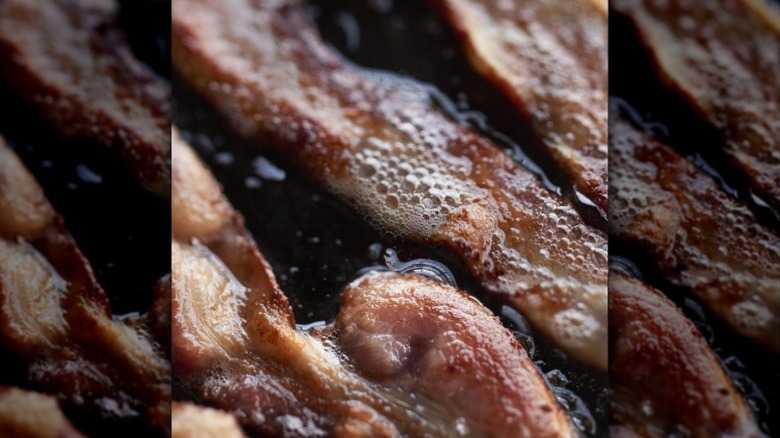You've Been Cooking Bacon Wrong — Here's How It's Done
Bacon cooked in a regular skillet creates familiar problems: grease splattering across your cooking surface or a fresh sting from popping oil. That, and you can only make a small amount at once. A better, and increasingly popular, way uses a large, deep pot. Start by placing the bacon into a cold pot. Starting on a cold surface helps it to be splatter-free as the fat melts gradually over medium heat. This gradual heating keeps the bacon from cooking too quickly or sticking to the pot as it warms up.
@_jenifer___ I know I can't be the only one who cooks bacon this way! It's so much better than frying and a skillet. You don't get the splatter and it all cooks and it's done at the same time 🥰 🥓#bacon #feedinganarmy #blt #foodtok #dinner
The whole process takes 15 to 20 minutes, depending on the bacon's thickness and how crisp you prefer it, during which time you should be regularly stirring it. The stirring helps the pieces cook evenly and stops them from sticking together in clumps or burning. The tall sides of the pot act as a wall, holding in the melting fat and greatly cutting down on the messy splatter of regular skillets. The outcome is bacon that gets thoroughly crisped in its own grease to produce a savory crunch.
The texture achieved this way is dependably crispy throughout. The flavor stays powerfully bacon-forward, gaining richness from cooking directly in the rendered fat. Pieces prepared like this often turn out irregular, curled, and varied in shape, a look some people have nicknamed "Chaos Bacon." This pot approach allows for making larger amounts (like a whole pound or even more) within a single stovetop session. When preparing very large portions, some of the fat might need to be carefully poured off part way through cooking to make it easier for the bacon to crisp up.
Why cooking bacon in a large pot is better than a pan or oven
Using a deep pot has clear benefits when measured against other popular cooking methods such as pan-frying or the oven. Next to a standard skillet, the pot method reduces grease splatter thanks to its high walls, whereas pan-frying is well-known for the mess it can make. If you're using a pan, there are ways to reduce bacon splatters and make it crispy. The pot, though, allows cooking much larger amounts all at once and doesn't require any additional steps or ingredients to manage oil spray.
Baking bacon in the oven is another splatterless way to make this delicious breakfast treat which can match the pot method's capacity for big batches. Oven cooking also requires less active participation, just one flip when using parchment paper underneath. Regarding texture, ovens make flatter strips, with mouthfeel changing based on whether a rack is used (making it crispier) or if the bacon bakes right on a lined sheet (resulting in a crisp-chewy mix). The pot method produces crispy, unevenly shaped pieces. Air frying bacon is another method that's fast and creates crisp pieces but holds a smaller amount than a big pot. The pot method is notable for mixing good splatter management, solid texture, and large-batch capacity.

